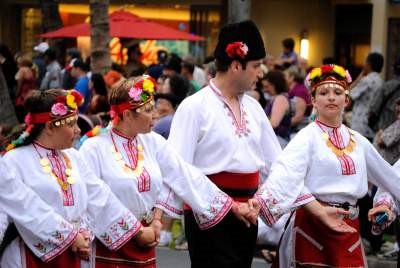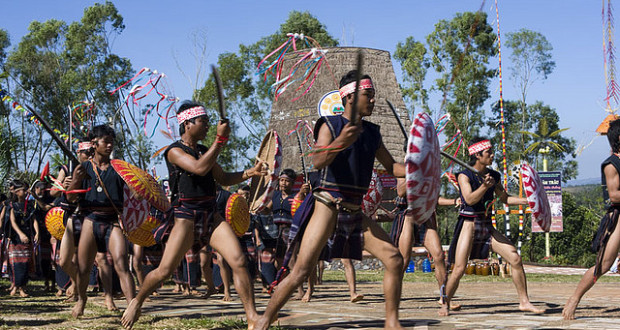The way different cultures express their unique traditions is a fascinating subject. World Ethnic Day, which will be held Friday, June 19, celebrates the things that make different ethnic groups unique.
The event, which is sponsored by the website Craftsvilla.com, encourages people from every culture to share with others the customs and traditions of their individual ethnicity, including their cuisine, jewelry, clothing, arts and crafts, and much more.

What Our Traditions Say about Who We Are
Cultural traditions are an important signifier about who we are as a people. The way we dress, the foods we eat, the decorations we choose to make ourselves look special, even the handicrafts we make, all of these things say something both to ourselves and to the outside world about what we believe, what we value, and what we want as a society.
There’s a reason cultural traditions stay the same for a long period of time, in some instances for centuries. They are an inherent reflection of the soul of our distinct cultures. The statements our cultural heritage say about ourselves is eternal.
Traditional Ethnic Cuisines
Consider, for example, traditional ethnic cuisines. What do the foods that are central to a particular ethnicity say about that distinct population?
Typically, the foods are based on the types of animals and animals that are native to that group’s location. For example, Japan is composed of a series of islands surrounded by the sea. So it’s not surprising that their traditional ethnic cuisine revolves around seafood.
In the same way, China has an enormous landmass that is comprised of many different types of topographies, from beaches to mountains, from deserts to swamps. So that may explain why China’s traditional ethnic cuisines include so many different types of foods, from fowl to beef, and from exotic vegetables to the most common types of rice.
In Arabia, people have been eating the same type of food for thousands of years. The staple of Saudi Arabian cuisine include rice, wheat, lamb, chicken, potatoes and dates – all of which are native to that part of the world.
Arabian traditional dishes include Shawarma and Falafel, which are commonly consumed throughout Saudi Arabia and elsewhere, even though they originally were Levantine and Egyptian, respectively.
The way food is prepared also is a reflection of a culture’s history. Traditional ethnic cuisines typically are made by hand. That’s because they typically were developed before the availability of modern conveniences such as electricity or gas-powered ovens.
Foods that are made by hand are necessarily simpler. But that doesn’t mean that their flavors have to be simple. The combination of a wide variety of flavors, spices and textures can result in exciting culinary creations even if they are made essentially hand or can be cooked over an open fire.
Traditional Ethnic Clothing
The clothing that people wear during traditional cultural celebrations also says something about their history and who they are as a people – much more so than the everyday clothing people wear, which tends to be more functional and less ornate.
Traditional ethnic clothing includes such things as the colorful sarees worn by Indian women on special occasions, or the ornate dressing kimonos worn by Japanese women. In Africa, on festival days many women wear colorful, ornate dresses and exotic headgear that is both functional and celebratory.
And in the remote island nations of the South Pacific, ethnic cultures wear distinct clothing that is recognized worldwide as being representative of their culture.
In Fiji, for example, both men and women wear the sulu skirt, which is considered that nation’s traditional type of clothing. It is traditionally made from a rectangular cloth that is cut so that it fits between the knee and the ankle. The sulu wraps around the hips and legs and usually is fastened by being tied at the waist, although contemporary sulus sometimes are fastened with buckles.
Like so many traditional ethnic clothing, in Fiji, sulus are seen as an expression of national identity and are often mandatory for certain settings, such as public events or national celebrations. In fact, sulus are so connected to Fijian identity that other ethnicities are often discouraged from wearing them in public.
Traditional Ethnic Jewelry
Like food and clothing, traditional ethnic jewelry usually is reflective of what cultures had to work with at hand.
For example, in the Americas, the original population made jewelry form the metals, stones, hardwoods and gemstones that were naturally found in the world around them. Jewelry made from topaz, bone, hide, vegetal fibers such as hemp, gold, and precious and semi-precious gemstones continue to be made and sold throughout the American Southwest and elsewhere.
Different people have different ethnic traditions. But no matter what they are or how unique they can be compared to other cultures, they always say something about that ethnicity’s tradition, environment and world view.
 Living There
Living There



